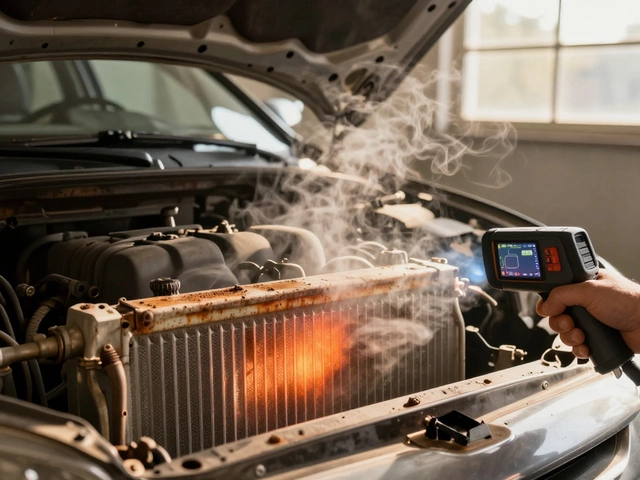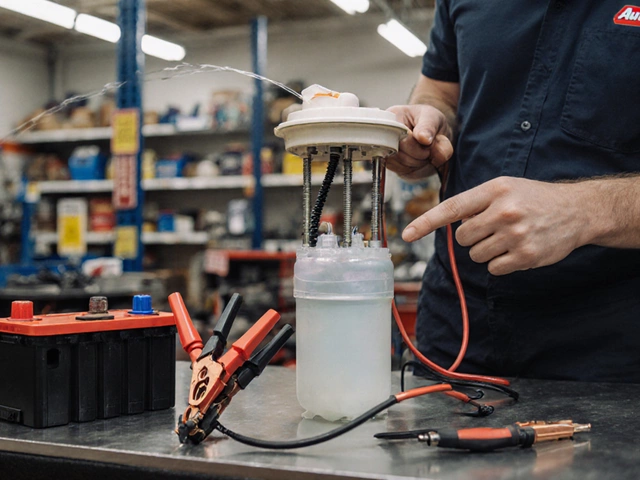Oil Change Basics: Keep Your Engine Running Smoothly
Skipping an oil change feels harmless until the engine starts whining. Fresh oil lubricates moving parts, carries heat away, and traps dirt. When it gets old, it thickens, loses its grip, and can turn into sludge that wears your engine faster. In short, a good oil change is cheap insurance against big repair bills.
Most new cars come with a service sticker that tells you when to change oil. If you can’t find it, a safe rule of thumb is every 5,000 to 7,500 miles for synthetic oil and about 3,000 miles for conventional oil. Your driving style matters too – city stop‑and‑go, short trips, and towing put extra stress on the oil, so you might need to change it more often.
How Often Should You Change Oil?
Check the owner’s manual first. It lists the exact interval for your model and the type of oil it likes. If you use full‑synthetic, you can stretch the gap to about 10,000 miles on many modern engines. If you stick with conventional, keep it under 5,000 miles.
Don’t forget the oil filter. Every time you pour new oil in, replace the filter too. A clogged filter means dirty oil circles back into the engine, defeating the whole point of the change.
Signs You’ve Skipped an Oil Change
Look for these red flags before you end up with a ruined motor:
- Dark, gritty oil on the dipstick instead of a clear amber.
- Engine knocking or ticking sounds, especially during acceleration.
- Steam or excessive heat coming from under the hood.
- Reduced fuel efficiency – your car starts drinking more gas.
- Dashboard oil‑pressure warning light stays on.
If you notice any of these, stop driving and get the oil checked. Continuing to run the engine can cost you thousands in repairs.
Changing oil yourself can save money, but you need the right tools: a drain pan, socket set, new oil, and a filter. Warm up the engine for a few minutes so the oil drains easier, then lift the car safely with a jack or ramps. Let the old oil flow out, replace the drain plug, swap the filter, and pour in the new oil to the level indicated on the dipstick.
If DIY isn’t your jam, most quick‑lube shops will do the job for about $30–$50 for synthetic oil. Look for seasonal promotions; they often include a free filter.
To stretch your oil’s life, keep the engine clean, avoid short trips when possible, and check the oil level regularly. A quick glance at the dipstick once a week can catch low levels before they become a problem.
Bottom line: an oil change isn’t just a chore; it’s the easiest way to protect a huge investment. Stick to the schedule, watch for warning signs, and you’ll keep your car humming for years to come.

Does the Engine Need to Be Running When Adding Oil? Here's What Really Happens
Adding engine oil with the engine running is a common mistake that can lead to overfilling and engine damage. Learn the correct way to check and add oil for maximum engine life and safety.
CONTINUE READING
Car Engine Oil Sounds: What to Listen for When Your Car's Low
Car engines have a way of telling you when they're running low on oil, and the sounds aren't exactly pleasant. This article breaks down what noises to watch out for before serious damage happens. You'll find plain explanations, examples of specific sounds, and tips on catching oil-related engine trouble early. If you've ever wondered what a dry engine really sounds like, read on. Understanding these warning signs can save you a ton in repair bills.
CONTINUE READING
Should You Simply Add Oil to Your Car? Essential Engine Oil Tips
Understanding whether you can just add oil to your vehicle or if you need an oil change is vital for any car owner. Explore the importance of maintaining the correct oil level and the role oil plays in keeping your engine running smoothly. Discover when adding oil suffices and when a full oil change is necessary. Learn about oil types, how to read dipsticks, and the consequences of neglecting proper oil upkeep. Get tips for efficient vehicle performance and making informed maintenance decisions.
CONTINUE READING











